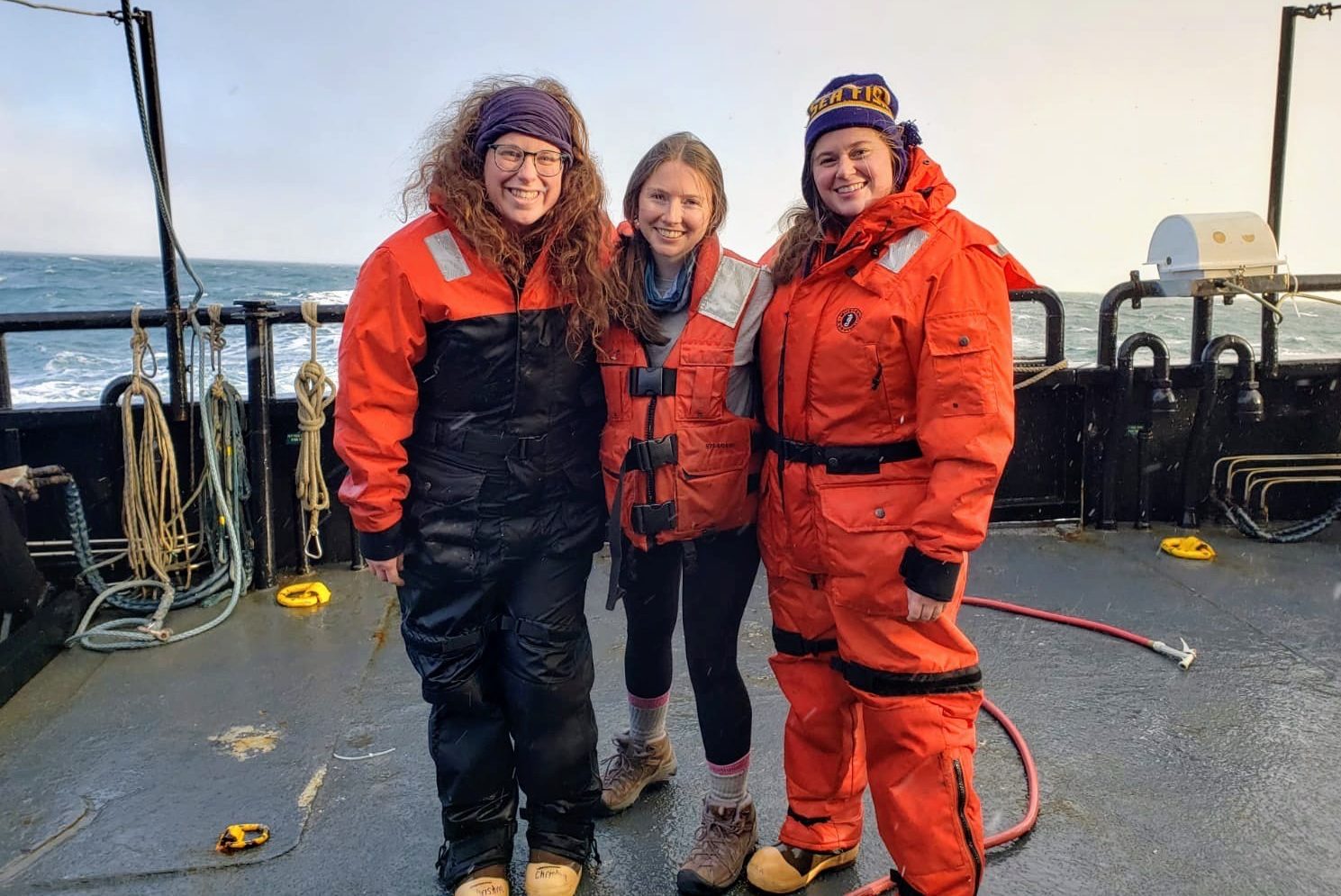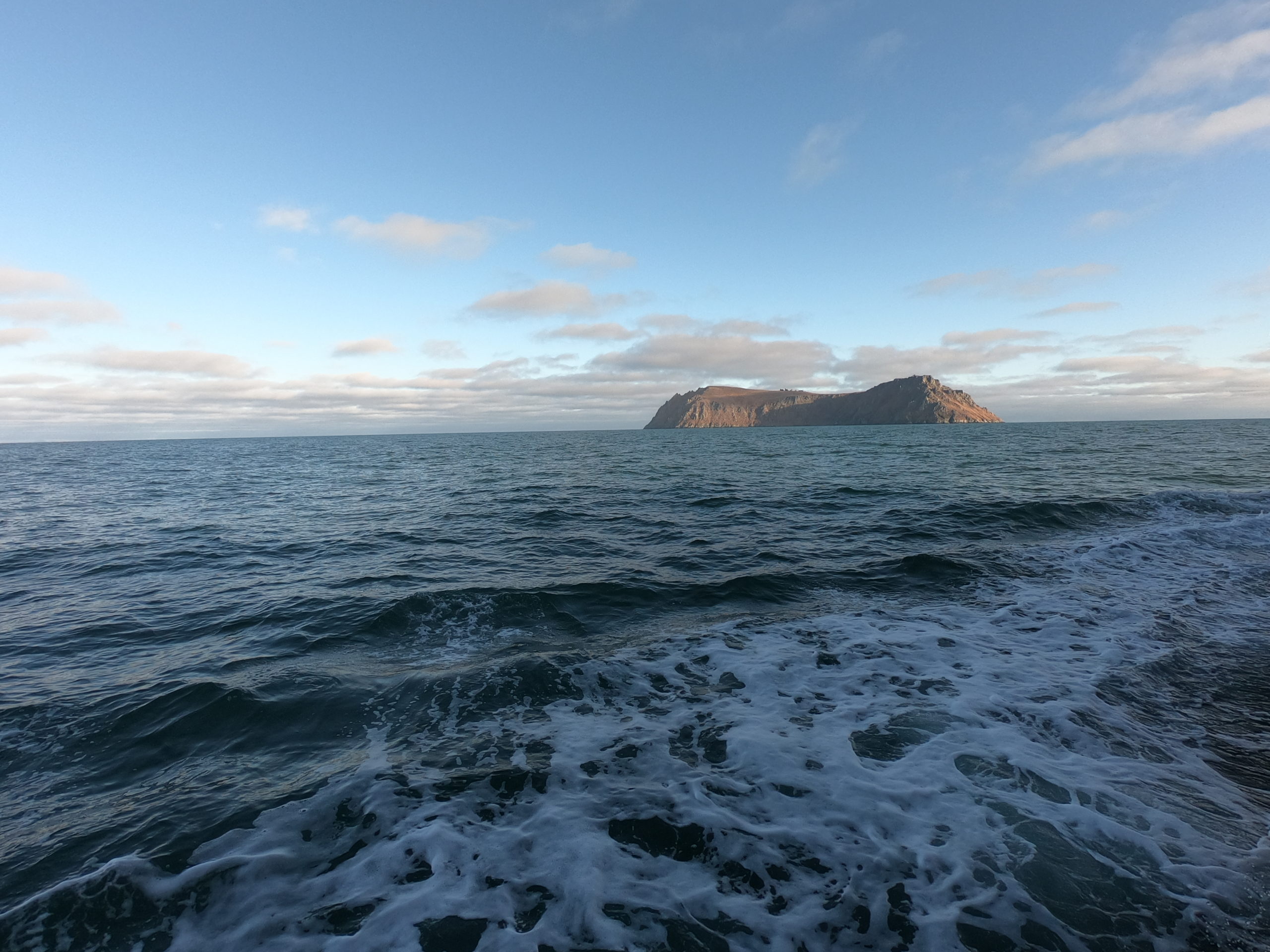Clark geography researcher experiences a ‘changing Arctic’ on recent expedition

When Arctic researchers embarked on an unusual late-season cruise to the Bering and Chukchi seas off of Alaska in October, they expected to find a biological system that had slowed down due to cooling temperatures. Instead, they encountered an ocean that was buzzing with activity spurred by unseasonably warm water, with sea ice formation still weeks away.
“Climate change is affecting the Arctic faster than the rest of the globe, resulting in huge implications for life in the ecosystem,” says Clark University Ph.D. student Clare Gaffey, who was on the small research team aboard the Norseman II, a converted king crab boat crewed by Support Vessels of Alaska. “We’re able to show what’s happening through the data we collect during this fieldwork.”
Researchers from the National Science Foundation-funded Distributed Biological Observatory (DBO) project — led by the cruise’s chief scientist Jacqueline Grebmeier of the Chesapeake Biological Laboratory — have been sampling productive “hot-spots” in U.S. Arctic waters since the late 1980s. The team typically sets sail in July, but this year’s group — which included researchers from Clark, the University of Maryland Center for Environmental Science, and the University of Alaska Fairbanks — was delayed by the COVID-19 pandemic. The group left for its three-week expedition on Oct. 2.
“The main mission, which we did accomplish, was continuing the time series we have,” Gaffey says. “The DBO project revisits the same spots each year, recording ocean measurements like temperature and salinity, but a lot of what we’re looking at are different aspects of the biology like phytoplankton, zooplankton, and larger biomass.”
This year’s group also included scientists affiliated with the Arctic Marine Biodiversity Observing Network (AMBON) — led by Katrin Iken at University of Alaska Fairbanks’ College of Fisheries and Ocean Sciences — which is a part of a national network studying how climate change affects biodiversity and species distributions in the U.S. Arctic. Through the support of AMBON, Gaffey collected samples for environmental DNA, a process that involves filtering seawater to later examine the genomic sequence to determine what types of animals are living in the locations where the ship stopped. Those samples will help identify various species living in the water and detect any changing organismal additions.
Gaffey also helped researchers from the University of Maryland collect benthic organisms that live on the seafloor. This research will help scientists document changes in seafloor biomass as well as detect harmful algal blooms that are becoming increasingly frequent in Arctic waters.
The entire scientific crew took numerous precautious before the cruise left from Nome, Alaska, including quarantining in Anchorage and taking multiple COVID-19 tests before flying to Nome by charter aircraft to avoid any potential viral exposure to residents in the Bering Strait region. Professor Karen Frey, lead DBO scientist for Clark University, says the team worked closely with state officials to ensure there was no possibility of transmitting the virus, with participating universities also adhering to their own stringent guidelines.

After the team set sail, researchers typically would have expected to encounter sea ice, but this year the region experienced one of the lowest levels of sea ice in recent history — second only to 2012.
“It’s alarming,” Gaffey says. “In past years we would have needed an ice breaker to reach these areas, but aside from outrunning a few storms, these seas were readily accessible. It’s a clear sign of a changing Arctic.”
Through their research, the scientists determined that delays in sea ice formation are supporting uncommon late-season biological production. The team found the biomass of microalgae in the water column was unexpectedly high — not much lower than what’s often observed in the middle of the summer under near 24-hour daylight.
“This loss of sea ice has broad consequences, including critical impacts on the highly productive marine ecosystems throughout the region. Seasonal sea ice in this region is not only breaking up earlier in the spring, but also reforming later in autumn — a time of the year that has had minimal field observations,” Frey says. “The late-season field measurements that were taken during this particular cruise are therefore extremely important for understanding the full picture of how ecosystems will change under conditions of declining sea ice cover.”
The samples obtained during the excursion were brought back to home laboratories in Maryland, Washington, and Alaska to support multiple long-term projects.
The crew of the ship and researchers also recovered and redeployed the Chukchi Ecosystem Observatory moorings, a battery-powered automated observing system that will continue to monitor the ecosystem until the next recovery a year from now.
“We only get one chance each year to deploy fresh sensors with new batteries, so this cruise was important to avoid interruptions to the observations,” noted University of Alaska Fairbanks Oceanographer Seth Danielson. “The recovered data are already showing the effects of oceanic heat that extend further into the fall and early winter.”
Funding for the cruise was provided by the National Oceanic and Atmospheric Administration, the North Pacific Research Board, and through the National Oceanographic Partnership Program, which included funding from the Bureau of Ocean Energy Management.


